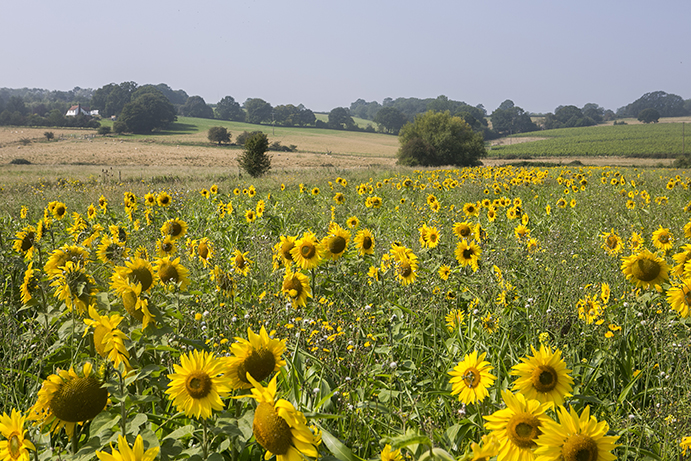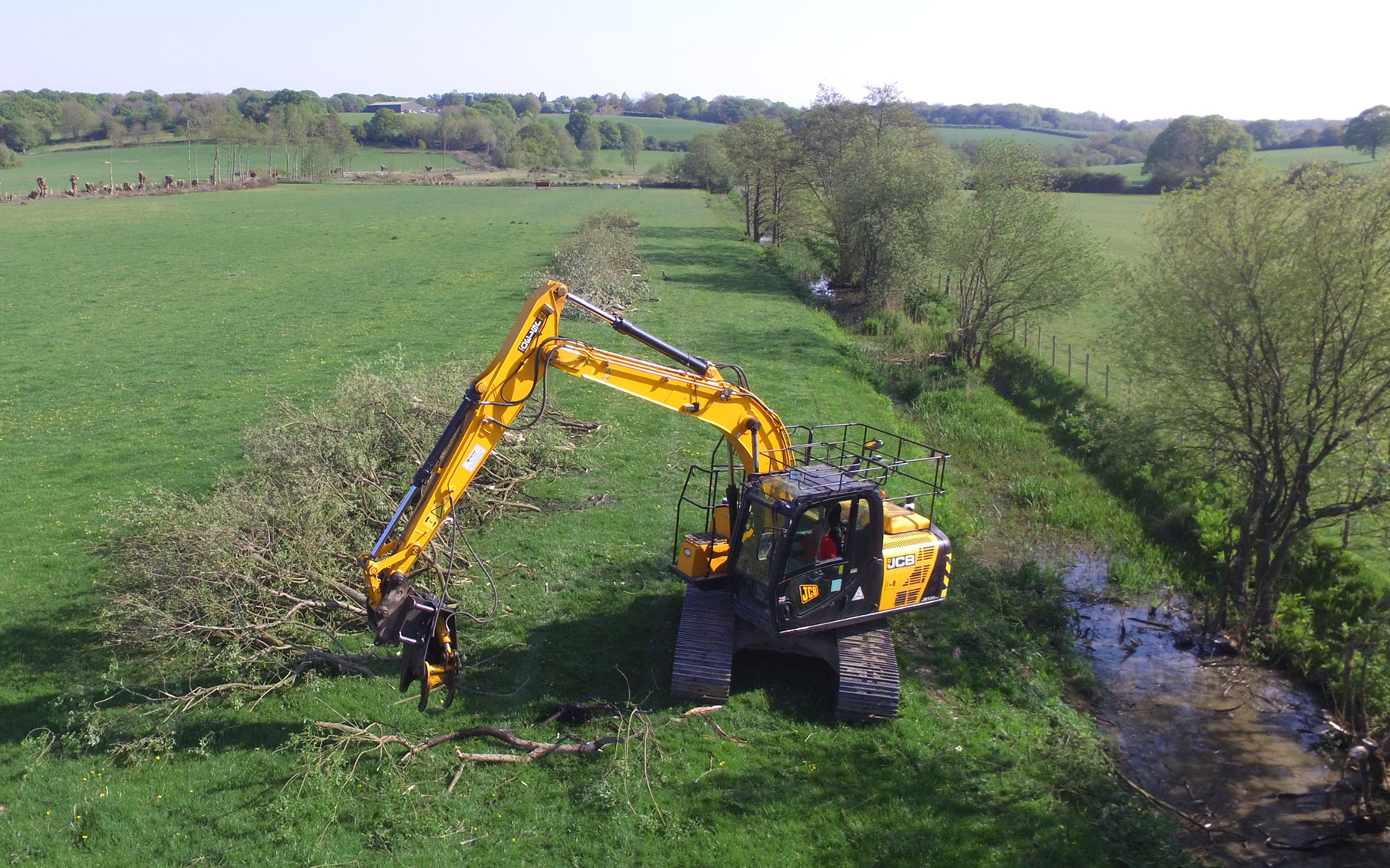Post-war farming priorities and policies were all aimed at producing enough food to feed a new burgeoning population, one which right across Europe, included a huge number of malnourished people in economies where a cheap source of food was high priority.

The practises that resulted didn’t always give the environment much thought. In the last 30 years though, food quality and quantity have become far less relevant to modern European societies and we are ever more conscious of our impact on the planet. The first time the farmed environment became a political subject via the European Union was in 1985 at the first recognition of ‘Environmentally Sensitive Areas’. This followed with the ‘Countryside Stewardship Scheme’, which rolled out in the early 90’s.
The administration of the scheme was taken over by the (then, now DEFRA) Ministry of Agriculture, Fisheries and Food (MAFF) in 1996, and the scheme expanded to include new landscapes and features, including whole farm plans for restoring and recreating traditional walls and ditches, wildlife corridors in arable areas using uncropped margins in arable fields (with management to benefit associated wild flowers and birds), traditional buildings, and old meadows and pastures (important for maintaining and increasing biodiversity). In the meantime, the scheme was incorporated under the umbrella of the European Community‘s ‘agri-environment’ programme which aims to protect the environment and the countryside through the promotion of green farming practices.
The Countryside Stewardship Scheme closed to new applications in 2004 with the introduction of the Environmental Stewardship (England) Scheme. The ESS was administered by DEFRA and Natural England, it was composed of two levels, Entry Level and Higher Level. The primary aims of the scheme were to:
- Improve water quality and reduce soil erosion – by encouraging management which can help to meet these aims;
- Improve conditions for farmland wildlife – including birds, mammals, butterflies and bees;
- Maintain and enhance landscape character – by helping to maintain important features such as traditional field boundaries;
- Protect the historic environment – including archaeological features and artefacts.
In 2015 the CSS was reformed again to offer mid and higher tier options for farmers and landowners that are more tailored and targeted. Since the inception of Environmental Stewardship, M.A. Piper & Son Farms have always engaged in the highest level of options, measures and management practises that the schemes have offered. We firmly believe that the footprint of farming can coexist with a vibrant and healthy environment.
Our current stewardship agreement runs from 2018-2023 and here we list some highlights from the scheme, showing what we are passionate about delivering alongside our food production as a ‘Public Good’:
- BE3- Management of Hedgerows: 41,000m
- GS2- Permanent grassland with very low inputs: 42ha (104 acres)
- GS6- Management of species rich grassland: 83ha (205 acres)
- GS10- Management of wet grassland for wintering waders and wildfowl: 68ha (168 acres)
- SW1- 6m buffer strip on arable land: 58ha (143 acres)
- SW7- Arable reversion to grassland with low fertiliser input: 22ha (54 acres)
- WT2- Buffering in-field ponds and ditches in arable land: 5ha (12 acres)

- WD3- Woodland edges on arable land: 10ha (25 acres)
- AB3- Beetle Banks: 2,700m2
- AB8- Flower rich margins and plots: 4ha (10 Acres)
- AB9- Winter bird food: 13ha (32 acres)
- AB15- Legume fallow: 60ha (150 acres)
- BN5- Hedgerow Laying: 230m
- BN7- Gapping up hedges: 1,700m
- BN11- Planting new hedges: 3,000m
Going forwards now that we are not members of the European Union, Environmental Stewardship will become a home grown policy in the United Kingdom, governed by ‘The Agriculture Bill’ from Westminster and not Brussels. There is an opportunity to design a new scheme (known currently as ELMS) that can effect huge and diverse environmental gain across the farmed landscape in Britain. We hope that this scheme will recognise and reward the work we’ve put into our own farmed environment over the last 30 years whilst also looking to seek new and interesting ways in which we can further enhance our biodiversity net gain whilst maintaining profitable food production. It is a huge challenge and one we relish.
The real buzzword about town at the moment is the term ‘regenerative agriculture’, definitions are loose but to us it essentially means the layering of all sorts of different management techniques on top of each other to create a farmed environment that increases its units of measure (relating to the environment) each year. This could mean many things to many people, for example increasing worm counts, or bird counts or increased species of tree or grasses or wildflowers. For some, one of the main metrics is ‘Greenhouse Gas emissions’ a kind of globally accepted unit of measure that universally every person on the planet can impact and change for the future of life as we currently know it. Farmers are no strangers to the need to produce sustainable food alongside the biodiversity gain that we mention when discussing agri-environment schemes and we are ready to help do something about it.
The National Farmers Union launched their pledge to be net zero GHG emissions by 2040, an ambitious 10 years prior to that of the UK as a whole. We have joined them in stating our aspirations, and in fact we have (with some help!) undertaken our first carbon audit, and are delighted to report that we are already, as a whole business, carbon neutral.

There are all sorts of pledges from companies and industry. The first major UK supermarket pledge, Morrisons who promise to be the first to be completely supplied by net zero British farms by 2030 is really important because it’s a driver for farms to know their GHG status and make improvements where necessary. The carbon market will therefore indirectly (if you want to supply a net zero supermarket) or directly apply a financial gain to farmers for knowing, understanding and doing something about their emissions.
Agriculture is uniquely placed to be part of the solution, as both an emissions source and a sink. As farmers we have a special responsibility to protect carbon reserves already in our soils and vegetation. But we must and we can do more. We know emissions from UK farms presently amount to 45.6 million tonnes of carbon dioxide (CO2) equivalent a year – about one-tenth of UK GHG emissions. But in stark contrast to the rest of the economy only 10 per cent of this is CO2. Around 40% is nitrous dioxide (N2O) and 50% is methane (CH4). We must do this without reducing our capacity to feed UK consumers with high quality, British food.
Our own audit, conducted on the ‘Farm Carbon Calculator’ platform (https://calculator.farmcarbontoolkit.org.uk/) takes account of our emissions via fuels, electricity, fertiliser, chemicals, buildings, machinery, livestock, waste, and external road haulage. It then sets it against our carbon sinks, which include woodland, hedges, perennial crops, uncultivated field margins, land removed from production for environmental stewardship schemes and most importantly soil organic matter (SOM), the carbon locked up in soil. It is SOM that has the made the difference between a positive and negative balance in our business. Year on year for the last 3 years we have recorded between 5-6% (relative) increases in SOM. This is because we now only very rarely cultivate the soils.
Cultivating releases CO2 from the soil, and it takes a long time to build that reserve back up, it also burns more diesel in the tractors in the process! Through this gentler, restorative approach to soil health we can maintain our productive output whilst improving soils and sequestering carbon. We have been doing this for nearly 15 years now, and it’s beginning to pay off.
So watch this space and please do send us your questions and comments related to the environment here.



